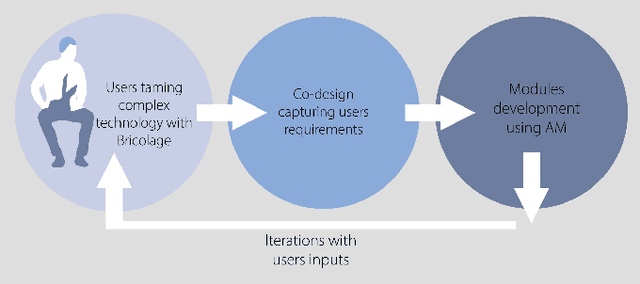Ronnie Smith
Addressing Potential Pitfalls of SAR Assistance on the Aging Population
Mar 24, 2023Abstract:In the field of Human Robot Interaction (HRI), socially assistive robots are being investigated to see if they can help combat challenges that can come with aging by providing different forms of support to older adults. As a result, it is imperative that the HRI community are aware of the potential pitfalls that can occur such as over-attachment, over-reliance, and increased isolation. This position paper argues designers should (a) avoid pitfalls that can lead to a negative impact on decline, and (b) leverage SAR decision making to avoid the pitfalls while attaining the benefits of this technology. Finally, we describe the concept for a framework as a starting point for addressing the concerns raised in this paper.
Co-Design of Assistive Robotics with Additive Manufacturing and Cyber-Physical Modularity to Improve Trust
Aug 02, 2021
Abstract:Robotics and automation have the potential to significantly improve quality of life for people with assistive needs and their carers. Adoption of such technologies at this point in time is far from widespread. This paper presents a novel approach to the design of highly customisable robotic concepts, embracing modularity and a co-design process to increase the involvement of end-users in the development life cycle. We discuss this process within the context of an elderly care use case. Using design methodology and additive manufacturing, we outline how key stakeholders can be involved from initial conception through to integration of the final product within their environments. In future work, we will apply this process to demonstrate the effectiveness of our approach for improving long-term acceptance and trust of robotic technology in care contexts.
 Add to Chrome
Add to Chrome Add to Firefox
Add to Firefox Add to Edge
Add to Edge